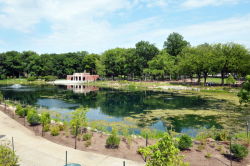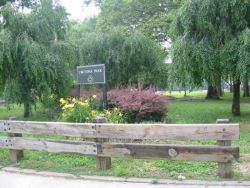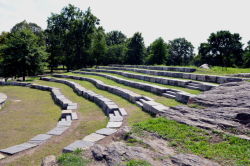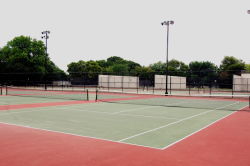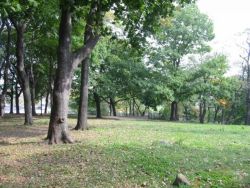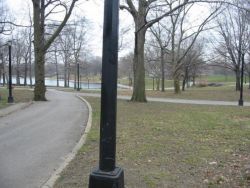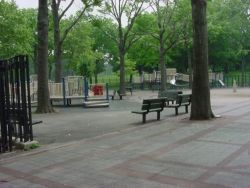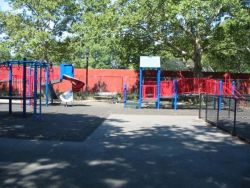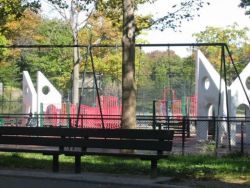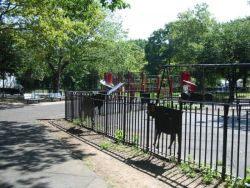Crotona Park
Clinton Playground
One of the premier politicians in America’s history, De Witt Clinton (1769-1828), after whom Clinton Playground and the nearby Clinton Avenue are named, served as mayor of New York City, governor of New York State, and as a U.S. senator. Two neighborhoods, a high school and several parks in the City all bear his name.
De Witt Clinton was born in Little Britain, New York, the son of the Revolutionary general James Clinton, and the nephew of Governor George Clinton. Educated at Columbia College (now Columbia University), he became his uncle’s private secretary around 1790. He was a member of the New York legislature from 1792 to 1802 after which he was appointed to the U.S. Senate. By the time he resigned in 1803 to become mayor of New York, he was one of the most powerful politicians in the State. He served as mayor every year with the exception of two brief stints until 1815. In 1812, he ran unsuccessfully for the U.S. Presidency against James Madison (1751-1836).
The list of Clinton’s achievements is impressive. A visionary statesman, he established the New York City public school system, improved sanitation, and bolstered the military defenses of New York harbor. He fought virulent opposition in the Democratic stronghold of Tammany Hall in order to build the Erie Canal and eventually succeeded in getting the 363-mile waterway opened in 1825. The canal expanded trade routes to the Midwest and secured New York’s position as the commercial hub of the nation.
Clinton’s influence is still felt today in the very structure of the city. It was Clinton who introduced the Manhattan grid street system, a milestone in city planning, that promoted the systematic development of the island. The plan, unveiled in 1811, utilized regular blocks and intended to maximize efficiency and simplify usage. The layout arranged 12 north-south avenues perpendicular to 155 east-west cross streets. This ambitious plan, which boldly defied Manhattan’s rugged geography, predicted and accommodated Manhattan’s exponential growth through the 19th and 20th centuries.
In addition to these large-scale public works, Clinton helped to form the New York Historical Society as well as other organizations including the Literary and Philosophical Society and the Orphan Asylum.
New York City acquired Crotona Park from the landowning Bathgate family in 1883. Originally known as Bathgate Woods, the park was renamed Crotona after a Greek colony in today’s Italy. In 1998, Mayor Giuliani funded a $30,741 renovation which saw the installation of chain link fences, guide-rails, as well as new paths and pavements.
Check out your park's Vital Signs
Clean & Safe
Green & Resilient
Empowered & Engaged Users
Share your feedback or learn more about how this park is part of a
Vital Park System

